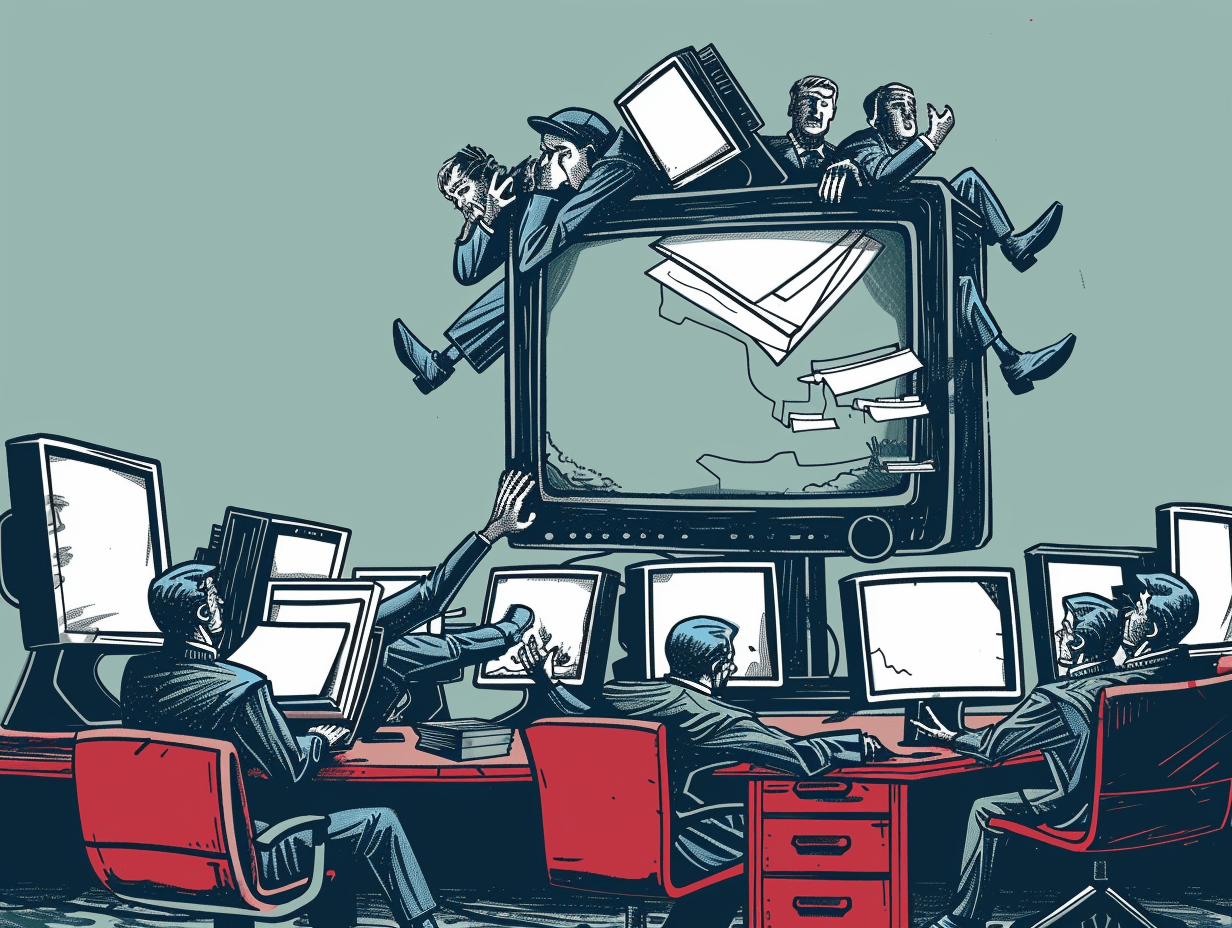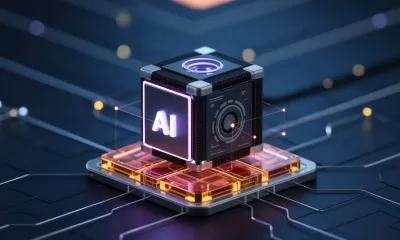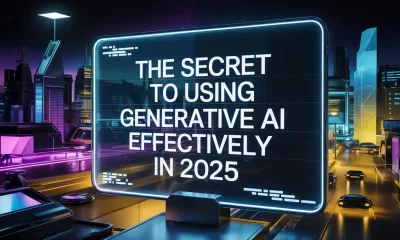Business
Worker Exploitation Rife in AI Industry
The AI supply chain has a darker side. Millions of workers are stuck in low-paying, dead-end jobs.
Published
10 months agoon
By
AIinAsia
TL/DR:
- Millions of workers are stuck in low-paying, dead-end jobs in the AI supply chain.
- Despite the industry’s wealth, there is little upward mobility or fair pay for these workers.
- The exploitation of hidden workers in the AI industry is a growing concern.
The AI industry is booming, with generous funding and highly paid executives and researchers at the top. However, the supply chain churning out generative AI tools like ChatGPT has a darker side. At the bottom of the chain are millions of workers who toil at screens, training algorithms for meagre wages.
According to a recent World Bank estimate, between 150 million and 430 million people do such work. They annotate images, text, and audio, create bounding boxes around objects in images, and even write haikus, essays, and fictional stories to train the sophisticated tools that could eventually replace them.
The Hidden Workers of the AI Industry
These workers are the hidden backbone of the AI industry, but they are often just scraping by. There is precious little of the time-honoured aspiration for the developing world: upward mobility. Data workers are still confined to low-value work, with few opportunities to transition to higher-paying digital jobs.
Leaders of data-labelling firms often start with noble intentions to help pull people out of poverty. However, they have struggled to get corporate customers to pay higher rates as competition in their field has increased. As a result, most data work platforms do not have policies in place to ensure their workers earn at least the local minimum wage.
Exploitation of Hidden Workers
The exploitation of hidden workers in the AI industry is a growing concern in Asia. For example, a recent job ad in Nigeria sought “professional translators” in Igbo for up to $17 an hour to help train generative AI models. This is well below the average rate for Nigerian translators, who tend to start at $25 an hour.
The ad came from Remotasks, the main platform of San Francisco-based AI startup Scale.ai, which just raised $1 billion from investors including Amazon.com in one of the year’s largest financing rounds. Scale.ai and its rivals, such as San Francisco-based Samasource Impact Sourcing, Argentina’s Arbusta S.R.L., and Bulgaria’s Humans in the Loop, play a critical role in the AI supply chain. However, they typically pay just enough for workers to maintain a living.
The Future of Hidden Workers in the AI Industry
As data work becomes more complex, platforms like Scale.ai have been looking for more skilled workers, including artists and people with creative-writing degrees to write short stories for training AI systems. While these jobs offer higher wages, they are still below what people with degrees should be earning.
Researchers say the appetite for such work is growing, but with few incentives to provide an equitable wage, it is hard to see workers’ economic status improving. The AI industry’s true transformative effects have been in entrenching economic power, with fewer opportunities for the people underpinning the AI revolution.
Towards Fair Pay for Data Workers
Perhaps we can learn something from Nike’s experience in the 1990s. The company faced an enormous backlash for the long hours and meagre wages its workers in developing nations earned. Over time, consumer boycotts and pressure from the media led Nike to put in stricter labour policies. It spent millions of dollars on improving conditions and pay.
The challenge for data workers is that their jobs are harder to visualise in the same, concrete way you can imagine a young boy sewing tennis shoes in a dimly-lit warehouse. However, tech companies should remember that poor working conditions at the bottom of their supply chain can also lead to substandard AI.
Comment and Share:
What do you think about the exploitation of hidden workers in the AI industry? How can we ensure fair pay and opportunities for upward mobility for these workers? Subscribe for updates on AI and AGI developments, and share your thoughts in the comments section below.
You may also like:
- Young Workers are Embracing ChatGPT
- AI Upskilling: Can Automation Boost Your Salary?
- 10 ChatGPT Prompts to Ignite Your Business Evolution
- Or learn more by tapping here.
Author
Discover more from AIinASIA
Subscribe to get the latest posts sent to your email.
You may like
Business
Can PwC’s new Agent OS Really Make AI Workflows 10x Faster?
PwC’s Agent OS seamlessly connects and orchestrates AI agents into scalable enterprise workflows, promising 10x faster AI deployment and real-world productivity gains.
Published
11 hours agoon
April 2, 2025By
AIinAsia
TL;DR – What You Need to Know in 30 Seconds
- PwC’s Agent OS orchestrates diverse AI agents into unified, scalable workflows, promising deployment up to 10x faster.
- Real-world cases already show efficiency boosts: 40% faster supply chains, 70% reduction in compliance tasks, and 30% quicker marketing launches.
- Designed for complex enterprise environments, it’s cloud-agnostic, multilingual, and actively deployed in leading global businesses, including PwC itself.
AI Agents are everywhere—but can they talk to each other?
PwC has unveiled its ambitious “Agent OS,” aiming to streamline AI orchestration at enterprise scale—promising workflows built and deployed 10 times faster. But is this platform truly the missing link enterprises need for their AI strategy?
Let’s dig in.
Enterprise AI sounds fantastic until you realise it often means managing a tangled web of different tools, platforms, and “intelligent” agents, each stubbornly refusing to play nice with each other. Companies regularly find themselves stuck between AI experiments and true enterprise-scale AI adoption because—ironically—these clever AI agents simply can’t collaborate.
Enter PwC’s new Agent OS, positioned as a kind of universal translator and orchestration conductor rolled into one. Imagine a central nervous system for enterprise AI, capable of seamlessly linking different agents and platforms into coherent workflows—no matter where the agents were developed or what tech stack they’re built on.
But is it all hype, or can PwC’s Agent OS genuinely unlock seamless, scalable enterprise AI?
What exactly is PwC’s Agent OS?
PwC’s Agent OS acts as a unified command centre, orchestrating a multitude of AI agents across popular enterprise platforms, including Anthropic, AWS, GitHub, Google Cloud, Microsoft Azure, OpenAI, Oracle, Salesforce, SAP, and Workday, to name just a few. It connects, coordinates, and scales AI agents—whether they’re custom-built, developed via third-party SDKs, or fine-tuned with proprietary data.
Think of it as the ultimate workflow builder, letting users—from AI specialists to your average non-tech-savvy manager—design sophisticated AI processes using intuitive drag-and-drop tools, natural language interfaces, and visual data-flow management.
Better yet, it’s cloud-agnostic, deploying effortlessly across AWS, Google Cloud, Microsoft Azure, Oracle Cloud Infrastructure, Salesforce, and even on-premises solutions.
Real-World Impact (not just theory)
Sceptical about fancy AI promises? Let’s look at some concrete use-cases PwC already claims are working in practice:
- Supply Chain: Imagine reducing your manufacturing firm’s supply chain delays by up to 40% through seamless integration of forecasting, procurement, and real-time logistics tracking agents from SAP, Oracle, and AWS, topped with PwC’s custom disruption detection agents.
- Marketing Operations: What if your retail marketing campaigns could launch twice as fast, with 30% higher conversion rates by orchestrating agents from OpenAI, Google Cloud, Salesforce, and Workday—all talking together in harmony?
- Compliance Automation: Picture a multinational bank automating regulatory workflows, drastically reducing manual reviews by 70%, thanks to agents seamlessly interpreting and aligning evolving regulatory policies via Anthropic and Microsoft Azure.
Who’s Already Benefiting?
PwC’s Agent OS isn’t just theoretical—real companies are already seeing transformative results:
- A tech company revamped its customer contact centre, reducing average call times by nearly 25%, slashing call transfers by 60%, and boosting customer satisfaction.
- A global hospitality firm automated brand standards management, achieving up to 94% reduction in manual review times.
- A healthcare giant applied AI agents to oncology workflows, streamlining clinical document processing to unlock actionable insights 50% faster, while simultaneously reducing administrative burdens by 30%.
And PwC themselves aren’t sitting idle: They’ve deployed over 250 internal AI agents, turbocharging productivity across tax, assurance, and advisory divisions—proving they’re ready to eat their own AI cooking.
Why PwC’s Agent OS Matters to Asia
In Asia, where enterprises are rapidly adopting AI to stay competitive (especially in dynamic markets like Singapore, India, and Indonesia), PwC’s Agent OS could offer a real edge. Asian enterprises grappling with complex multilingual data streams and diverse regional platforms may find a solution in the adaptive, multilingual capabilities of this system.
But it’s not just about tech. It’s about helping Asia’s leading enterprises quickly build, adapt, and scale AI-driven workflows to compete globally—accelerating innovation at a pace that keeps them ahead.
Could PwC’s Agent OS finally mean enterprises spend less time wrestling with AI tech—and more time reaping its benefits?
We’d love your take. Let us know in the comments below.
You may also like:
- How To Start Using AI Agents To Transform Your Business
- AI in Asia: Bridging the Risk Management Gap
- Microsoft’s AI Agents Set to Transform Asian Workplaces
- Read more about PWC agents on the official website by tapping here.
Author
Discover more from AIinASIA
Subscribe to get the latest posts sent to your email.
Business
Forget the panic: AI Isn’t Here to Replace Us—It’s Here to Elevate Our Roles
Learn why managing AI agents—not fearing them—is key to thriving in the workforce of tomorrow. Discover how to become an effective AI manager today.
Published
1 week agoon
March 26, 2025By
AIinAsia
TL;DR – What You Need to Know in 30 Seconds About the Rise of the AI Manager
- AI creates new leadership roles, not job losses.
- Successful AI managers combine tech knowledge with clear communication.
- AI boosts productivity, creating more jobs and opportunities.
- Invest early in AI literacy and critical thinking to thrive.
Professionals who master the art of managing AI agents are set to define the next era of work.
AI is everywhere right now—and so are fears about job displacement. But take a deep breath; there’s good news! Rather than making human skills obsolete, artificial intelligence is actually paving the way for a new, exciting role: the AI manager.
As AI agents evolve into reliable digital teammates capable of handling complex tasks, the spotlight shifts onto the people who manage them. In fact, the most successful professionals of the future won’t just understand how AI works—they’ll know exactly how to lead, direct, and collaborate effectively with their digital colleagues.
AI as High-Performing Team Members
Today’s AI isn’t just impressive—it’s genuinely useful. In the past few years alone, we’ve witnessed remarkable leaps in capabilities, especially with generative AI. These digital teammates are now expertly handling everything from financial analysis and legal research to content creation and data-driven decision-making.
The next big thing is ‘agentic AI’—digital agents that don’t just assist humans but actively work alongside them with a level of independence. Think about it: consistent, reliable, and tireless digital employees who never need a coffee break. Of course, that might make some of us nervous—who wouldn’t worry about a colleague who can work 24/7 at lightning speed?
But here’s the key: even the best talent needs effective management. AI might be powerful, but it still needs direction, oversight, and human judgement. The professionals who thrive won’t be replaced by AI—they’ll manage teams of digital talent to deliver results greater than anything achievable alone.
What Does It Mean to Manage AI?
Being an AI manager doesn’t mean abandoning traditional leadership skills; it means expanding them. Great managers have always needed two core competencies:
- People management: motivating, inspiring, and guiding human teams. While AI lacks emotions, clear communication and setting precise expectations are still vital.
- Technical management: structuring workflows, delegating tasks strategically, and ensuring alignment towards organisational goals.
Both skill sets are critical when managing AI. A manager of digital agents must understand the nuances of the technology—its strengths, weaknesses, and quirks—while also working effectively with their human counterparts. Just as a great sales manager might stumble managing engineers without understanding their workflows, managing AI requires hands-on technical knowledge combined with clear strategic vision.
Ultimately, being disconnected from practical realities won’t cut it. Leaders in an AI-driven environment must be equally comfortable engaging with technology as they are with strategy and collaboration.
Re-examining the Job Displacement Myth
Fears around AI’s impact often overlook one important economic principle: Jevons paradox. Simply put, when efficiency improves, overall demand frequently increases too. Yes, AI might automate tasks currently performed by humans—but that same efficiency boost can open doors we can’t yet imagine.
Think of the industrial revolution: automation displaced manual labour, but it simultaneously created unprecedented wealth, innovation, and new kinds of employment. Similarly, AI’s efficiency will likely spawn entirely new markets, industries, and roles—like AI agent managers—ensuring that human creativity and insight remain irreplaceable.
How Can We Prepare for This Shift?
Change can be uncomfortable, and the rise of AI is no exception. But the transition doesn’t have to be painful. Here’s how we can adapt:
1. Prioritise Practical Skills in Education
Universities excel at theory but often overlook practical skills that the workplace demands. It’s time to elevate vocational and professional training, the kind traditionally offered by polytechnics or community colleges, to build job-ready skill sets.
2. Embrace AI Literacy in the Workplace
Companies should embed AI literacy into their core training, ensuring everyone—from new hires to senior executives—is comfortable using and collaborating with AI tools. Businesses that invest early in AI literacy will hold a powerful competitive advantage.
3. Take Personal Responsibility for Learning
Individuals, especially those in roles susceptible to automation, need to proactively upgrade their skillsets. This doesn’t mean everyone should become a developer, but learning to confidently use AI, understand digital workflows, and develop critical thinking around tech are essential.
Crucially, becoming AI-literate doesn’t mean blindly trusting technology; it means being savvy enough to challenge it. An effective AI manager must know when to push back against the recommendations of digital teammates, recognising that AI isn’t perfect—it’s only as good as the people who oversee it.
Luckily, resources to build these skills abound: free online courses, corporate training, AI boot camps, and independent learning opportunities are readily available. Your job is to start learning—and keep asking smart questions.
Are YOU ready?
The future belongs to those who adapt, question, and lead the digital workforce. Are you ready to become an AI manager?
You may also like:
- Could AI Bosses Outperform Humans?
- How To Start Using AI Agents To Transform Your Business
- Unleashing the Power of AI Agents
- Learn more: read Navigating the AI revolution: A roadmap for managers and companies at the WEF
Author
Discover more from AIinASIA
Subscribe to get the latest posts sent to your email.
Business
Why are CMOs Still Holding Back on AI Marketing?
The New York Times embraces generative AI for headlines and summaries, sparking staff worries and a looming legal clash over AI’s role in modern journalism.
Published
1 month agoon
March 3, 2025By
AIinAsia
TL;DR – What You Need to Know in 30 Seconds
- Reluctant 27%: A significant chunk of CMOs have minimal or zero use of AI marketing, citing costs and ethical concerns.
- High Performers: Businesses that exceed profit goals are widely using generative AI for both creative work and strategy.
- Cautious Optimism: While some see major wins in campaign analytics, others struggle to find benefits in cost reduction and customer service.
- Risk of Lagging: Experts warn that slow adoption could leave traditional marketers scrambling to catch up in a rapidly evolving field.
Why Are CMOs Still Holding Back on Generative AI Marketing?
In a world where even your local bakery is dabbling with AI-driven marketing campaigns, it seems a little baffling that some Chief Marketing Officers (CMOs) are still on the fence about generative artificial intelligence (AI). The hype machine is running full tilt, with countless headlines promising a revolution in how we strategise and create marketing materials. And yet, according to Gartner’s latest research, 27% of CMOs report no or limited adoption of generative AI in their teams. What’s going on, and should these marketing chiefs be worried? Let’s explore.
The Reluctant Third
Let’s start with the eye-catching number that’s got tongues wagging across the marketing landscape: 27% of CMOs either aren’t using generative AI at all or are only dabbling on the periphery. Considering we’re several years into the generative AI hype wave, you’d think that figure would be lower. After all, we hear success stories about AI-generated ad campaigns or chatbots that transform customer service on a nearly daily basis. So why the reluctance?
One big reason often cited is the cost. While there are open-source options, enterprise-level tools (complete with robust support and advanced data security features) don’t come cheap. Then, there’s also the legal and ethical minefield: some executives worry about brand risk or data security concerns. If your marketing AI is scraping questionable sources for content, or if it accidentally pinches trademarked materials, the cost could be more than just monetary—it might damage your brand’s reputation.
High Performers Blaze the Trail
If you think generative AI is all hype, you might want to pay attention to the marketing teams who are actually succeeding with it. According to Gartner’s findings, 84% of high performers—businesses that exceed their annual profit growth and marketing goals—are leveraging generative AI for creative development, and 52% are putting it towards strategy development.
These stats matter because they highlight a gap between those who’ve embraced the AI revolution and those who are dragging their feet. High-performing organisations see “creative development” as the perfect playground for generative AI: from drafting copy to brainstorming design ideas, the tech is boosting the volume and diversity of creative work. Strategy development is also getting an AI-powered makeover, with marketers crunching campaign data in record time to find winning formulas.
As Gartner notes, CMOs who ignore the technology “are in a position of greater risk.” It’s not just about keeping up with the Joneses—it’s about leveraging a tool that can genuinely make marketing campaigns more efficient, more targeted, and possibly even more profitable.
Not Everyone Sees the Glitter of AI Marketing
Interestingly, the Gartner research also shows that generative AI’s benefits aren’t universally acknowledged. Over a quarter of CMOs surveyed reported little to no benefit in areas like cost reduction, customer service, and scalability. That’s a bit of a head-scratcher when many of us have been sold the dream that AI would turn marketing teams into lean, mean campaigning machines.
Part of the mismatch might come from inflated expectations. Some CMOs might have imagined generative AI swooping in like a marketing superhero, solving every challenge overnight. As a result, when the reality—training, experimenting, refining—sets in, disappointment can ensue.
Many believe GenAI will transform marketing, but despite the hype, many CMOs feel that their GenAI investments have yet to pay off.
It’s also worth noting that 6% of CMOs have no usage of generative AI at all, whereas 21% have only waded into the shallow end. Yet on the other side of the spectrum, around 15% see extremely broad use among their teams. That discrepancy screams caution from some corners and gung-ho enthusiasm from others.
Disruptors and Doubts
Remember those corporate AI solutions that come with hefty price tags? Well, the pace of AI evolution has accelerated massively, especially in Asia. Enter disruptive companies like China’s DeepSeek, which have introduced more affordable—or at least more flexible—versions of AI. They’ve changed the conversation around pricing, data security, and the potential of open-source models.
But not everyone is convinced. A survey by The Wall Street Journal found 21% of IT leaders aren’t currently using AI agents, with reliability being a major sticking point. While that might sound like a small number, keep in mind that these are the folks who sign off on the tech stack. If they harbour doubts, the marketing team’s AI ambitions could remain tethered to a cautionary anchor.
Where Are the Gains?
Despite the reluctance from some, 47% of those who have embraced generative AI are seeing a large benefit in tasks such as campaign evaluation and reporting. This indicates that when deployed properly, AI can absolutely streamline some parts of the marketing machine. Whether it’s quicker insight generation from data analytics or more accurate audience segmentation for targeted campaigns, the gains can’t be ignored.
So, if you find yourself in that 27% who are holding out, consider this: the competitive edge might be slipping away to those high performers who are pairing human creativity with AI efficiency.
Balancing Caution and Curiosity
Let’s be honest: any new technology comes with risks. Data security, ethical boundaries, and steep pricing are real concerns. The key might lie in adopting a balanced approach: start with smaller, safer implementations—like using AI for ad copy testing or initial design mock-ups—before rolling it out to high-stakes areas.
It’s a bit like learning to swim: you wouldn’t jump off the high dive if you’ve never been in the pool before, but you wouldn’t stand on the edge of the pool forever, either.
The Final Word: Ready to Jump In or Watch from the Sidelines?
So, is generative AI in marketing a passing fad or the future of the industry? The data suggests it’s much more than a flash in the pan. High performers are already capitalising on AI’s creative and strategic potential.
The question is: will the sceptics catch up before they’re left behind entirely?
You may also like:
- When Will AI Replace the CMO?
- Revolutionising Marketing: The Impact of AI in Asia’s Business Landscape
- Or try Google’s Gemini by tapping here.
Author
Discover more from AIinASIA
Subscribe to get the latest posts sent to your email.

Can PwC’s new Agent OS Really Make AI Workflows 10x Faster?

The Secret to Using Generative AI Effectively In 2025

AI-pril Fools! How AI is Outsmarting Our Best Pranks
Trending
-

 Life2 days ago
Life2 days agoAI-pril Fools! How AI is Outsmarting Our Best Pranks
-

 News2 weeks ago
News2 weeks agoAdobe Jumps into AI Video: Exploring Firefly’s New Video Generator
-

 News3 days ago
News3 days agoOpenAI’s New ChatGPT Image Policy: Is AI Moderation Becoming Too Lax?
-

 Business11 hours ago
Business11 hours agoCan PwC’s new Agent OS Really Make AI Workflows 10x Faster?
-

 Tools2 days ago
Tools2 days agoThe Secret to Using Generative AI Effectively In 2025
-

 Business1 week ago
Business1 week agoForget the panic: AI Isn’t Here to Replace Us—It’s Here to Elevate Our Roles
-

 News1 week ago
News1 week agoGoogle’s Gemini AI is Coming to Your Chrome Browser — Here’s the Inside Scoop
-

 News6 days ago
News6 days agoTencent Joins China’s AI Race with New T1 Reasoning Model Launch



















